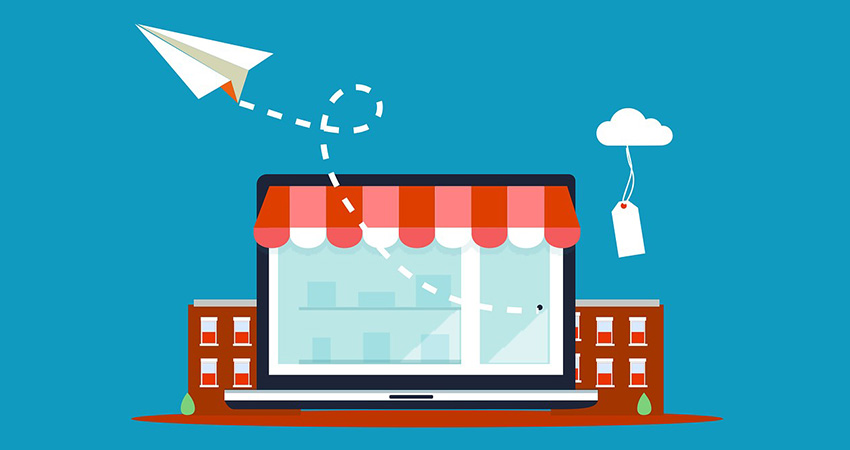After seeing some success selling online, ecommerce business owners will eventually arrive at a crossroads: Which path to take toward increasing revenue? There are a lot of options for how to expand and grow, including:
- Add new products to the product line
- Advertise and market more to increase sales
- Take products to other channels
Of these, one of the fastest ways to increase revenue is to expand sales channels, aka multichannel ecommerce or omnichannel selling.
What is Multichannel Ecommerce?
Multichannel ecommerce is when a business sells a product line across different channels online in order to increase revenue. While the idea is pretty straightforward, everyone’s approach to expanding to more channels will be a little bit different.
Why Go Multichannel?
More Revenue
Exploring new channels opens a business up to new potential customers, increasing the potential for revenue by huge amounts. For example, 25% of all money spent on ecommerce goes toward third-party sellers on Amazon. If there is an ecommerce store and no selling on Amazon, expanding to FBA could increase revenue by 50%.
Brand building
The more places your products live, the stronger your brand becomes. There’s a reason retail brands do so well online, and it’s because they take up mindshare and people have seen them in the stores they frequent. Having a product line across multiple channels has a similar effect over time.
How to Go Multichannel
Expand a product line internationally
If an online merchant sells on their own ecommerce website, they might not offer international shipping. Considering adjusting the site’s shipping policy to include it, and also work on international SEO to start appearing on search engines in other countries.
If you want to expand internationally on Amazon, they have a lot of marketplaces in other countries that function much like the U.S. and require online merchants to send inventory to those countries.
Once products are in Amazon’s international FBA warehouses, it functions identically to the US, but now there is access to potentially millions of new customers.
Enter different marketplaces or launch standalone store
Independent ecommerce businesses should look into expanding into marketplaces that have audiences that may be difficult to reach. Consider marketplaces like Amazon, Etsy, Walmart and eBay, once a huge player in the ecommerce world that still has relevance for certain niches. Also look to channels like Instagram and Facebook.
For ecommerce businesses not yet running a direct-to-consumer (DTC) website, dial in an online presence using shopping cart platforms like Shopify, BigCommerce, and WooCommerce.
Also, consider selling through DTC sales channels, which include social, where you can engage with customers and drive traffic back to your site.
When creating an ecommerce site, there needs to be a substantial marketing and advertising effort to attract a specific audience, as well as, the development of an SEO strategy to bring in customers organically.
Challenges of Multichannel Ecommerce
Split Inventory
Some marketplaces, like Amazon FBA, require merchants to send a portion of inventory to their warehouses to fulfill and ship to end customers. While this is very convenient, there will be split inventory for orders you fulfill vs. what Amazon does. This can end up being complicated, especially if products are sold internationally on FBA, here in the U.S., on your site and various other marketplaces.
Money Tied Up in Different Channels
Payment processors and marketplaces don’t give money for sales as soon as a customer pays. They pay an online business in periods. For example, Amazon pays every two weeks and Shopify pays twice per month. While this is fine, having money tied up in different platforms for weeks at a time can become hard to manage.
Managing Selling Across Marketplaces, Channels
Inventory management software
One of the most difficult aspects of multichannel selling is inventory management. Having inventory in different places makes it hard to predict restock dates. Consider purchasing sophisticated software that can track inventory across channels and provide accurate predictions for when restocking and delivery need to take place.
Shipping Software
If you do fulfillment and also send inventory to marketplaces, shipping software can simplify the process, pulling in orders and printing labels. Some include multichannel features like inventory management and returns processing.
Slow and Steady
Don’t jump into different marketplaces and channels all at once. Stick only with different channels you know your products can sell in, and only expand once comfortable with a newly added channel.
Selling internationally on Amazon FBA, for example, is like starting an entirely new seller account, but with even more strict rules that can catch you off guard. Getting fully integrated selling internationally through Amazon can take many months, and it can be distracting if launching multiple channels at once.
Conclusion
Multichannel marketing can be your ticket to taking your ecommerce business to the next level. While it can be difficult to manage, the rewards are multiplying revenue and gaining access to larger numbers of potential customers.
Eric Youngstrom is the CEO of Onramp

